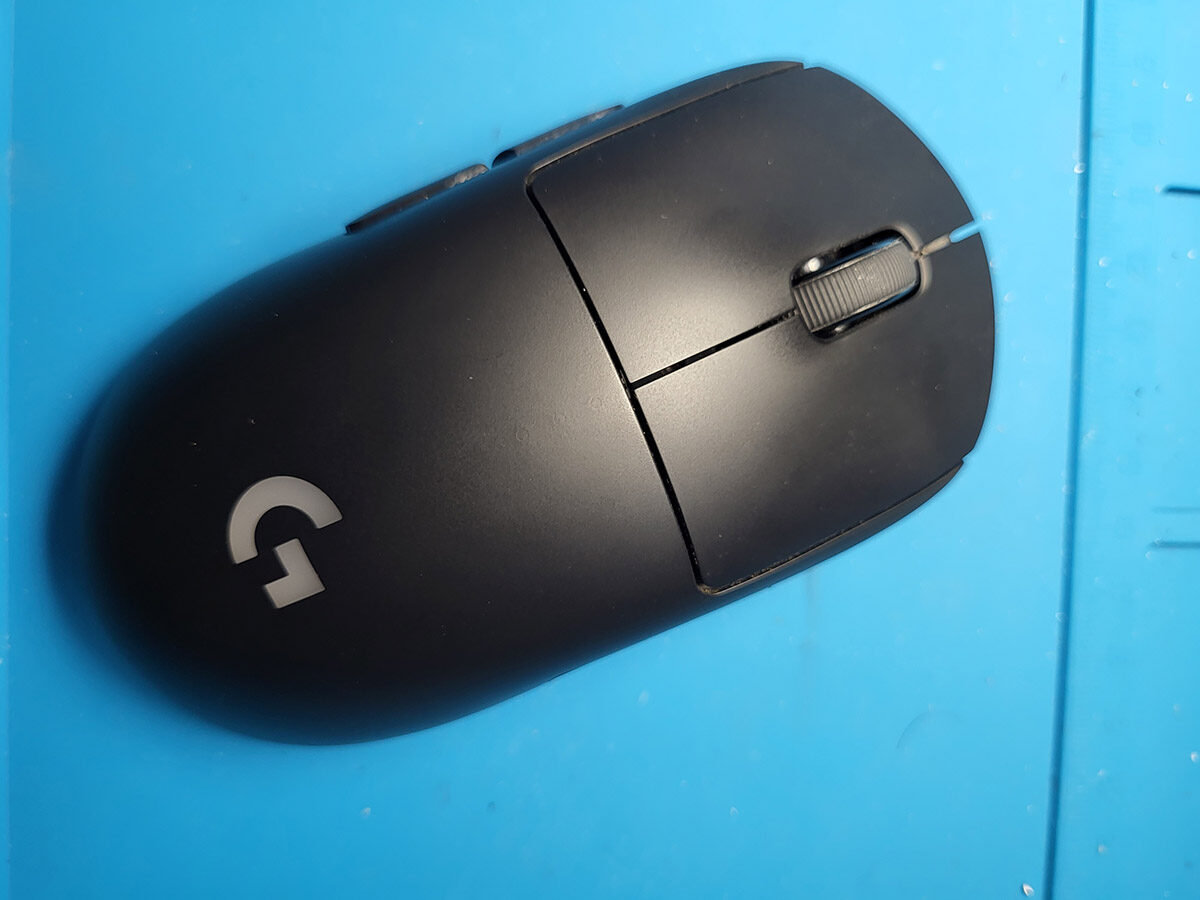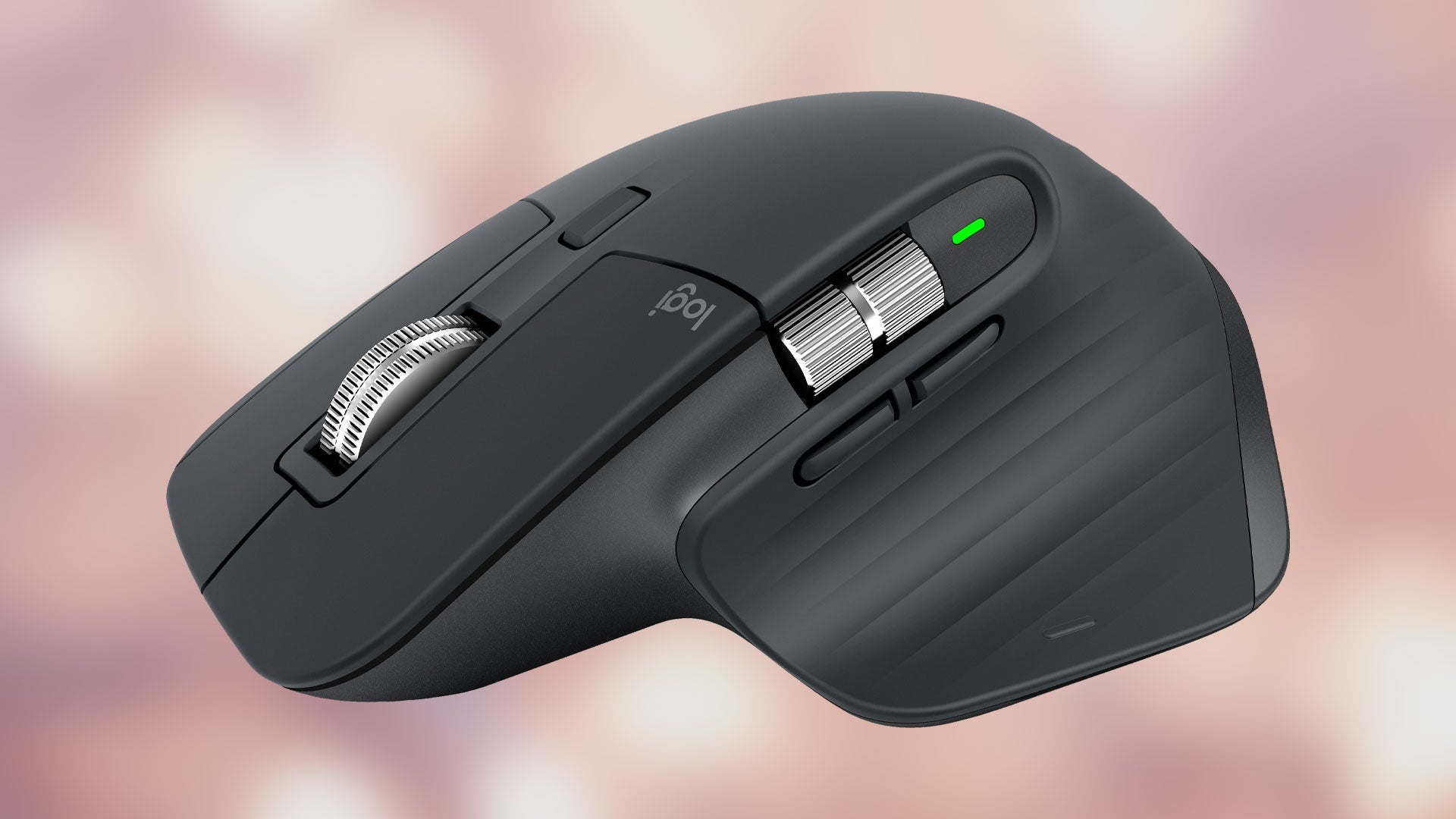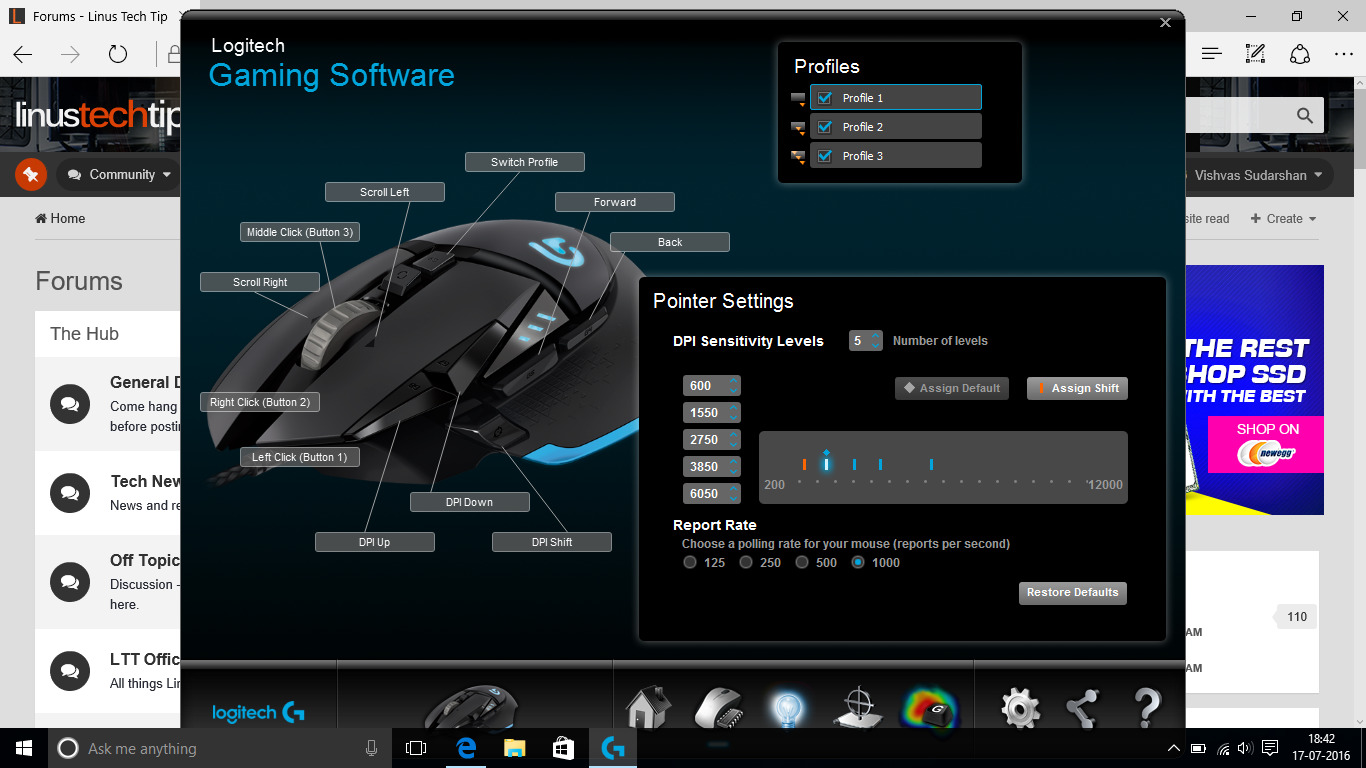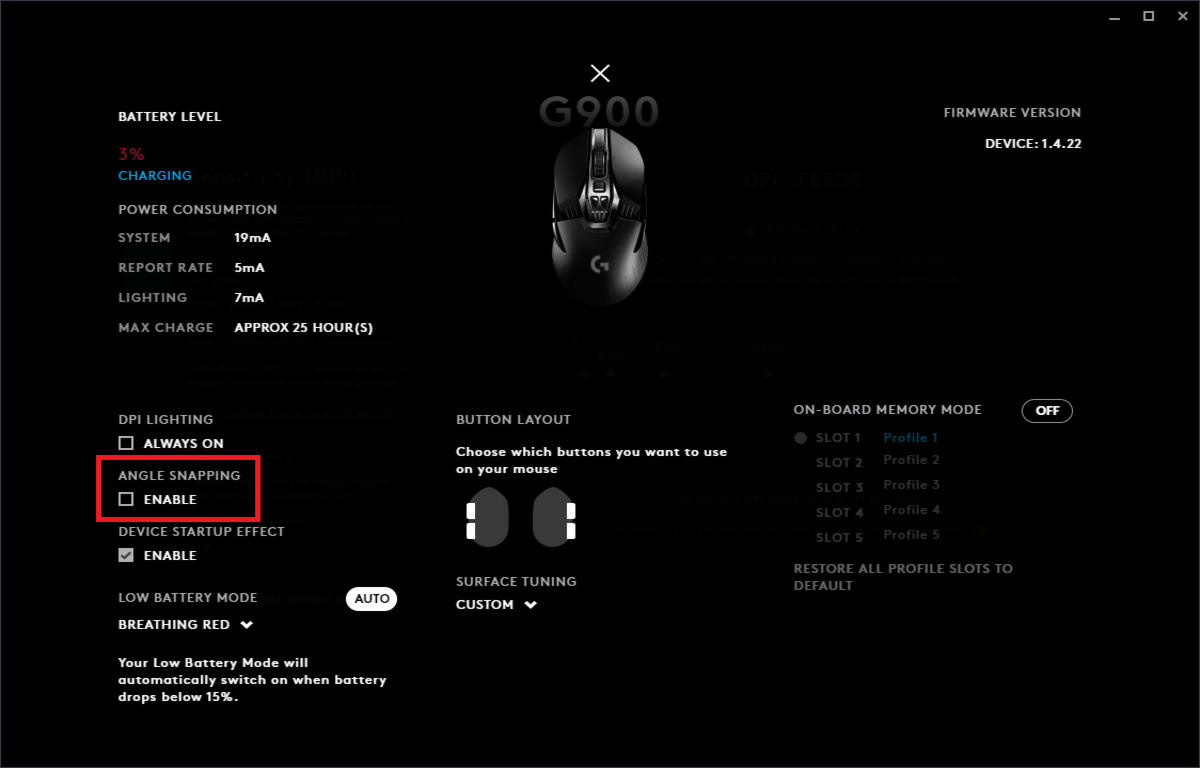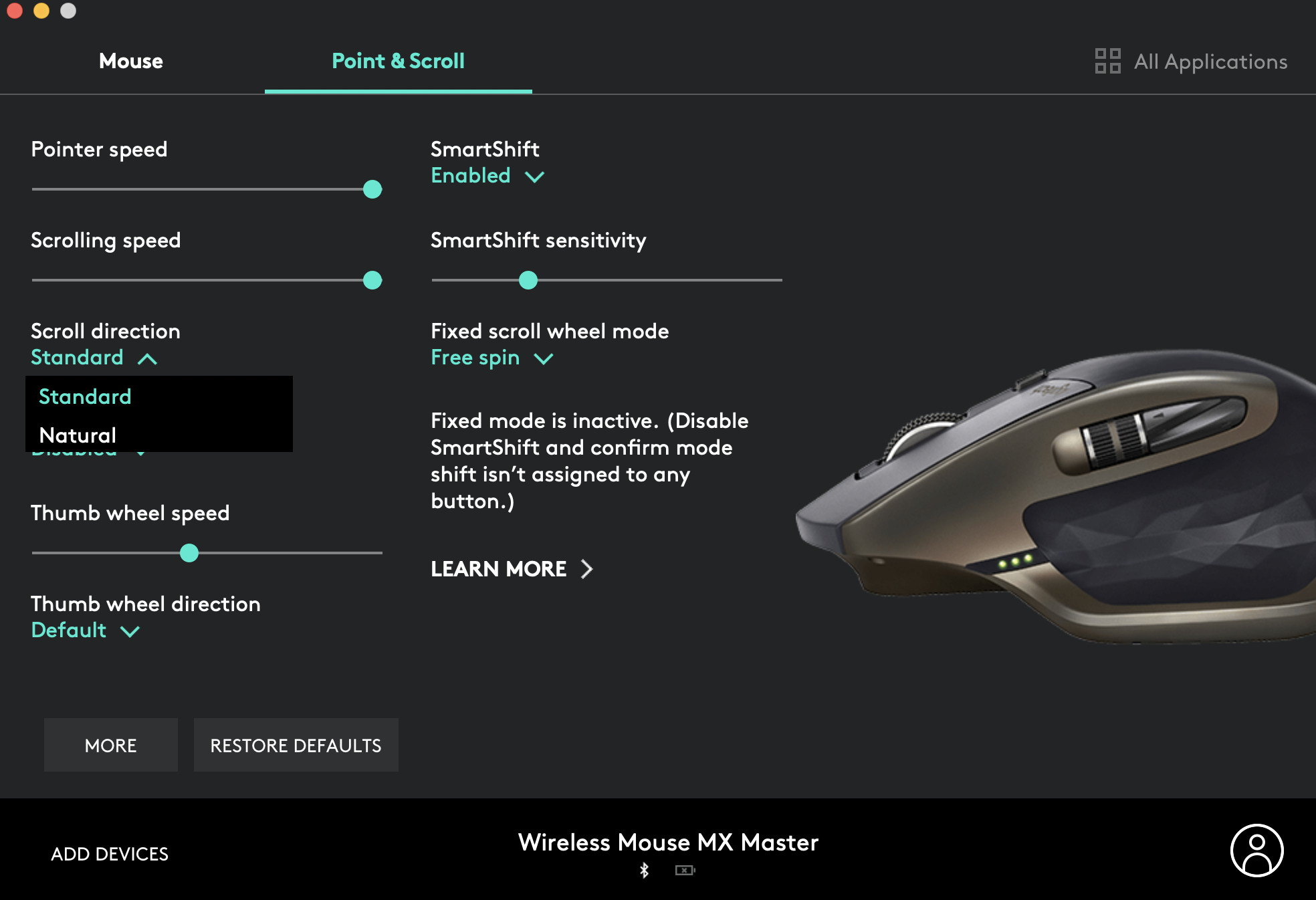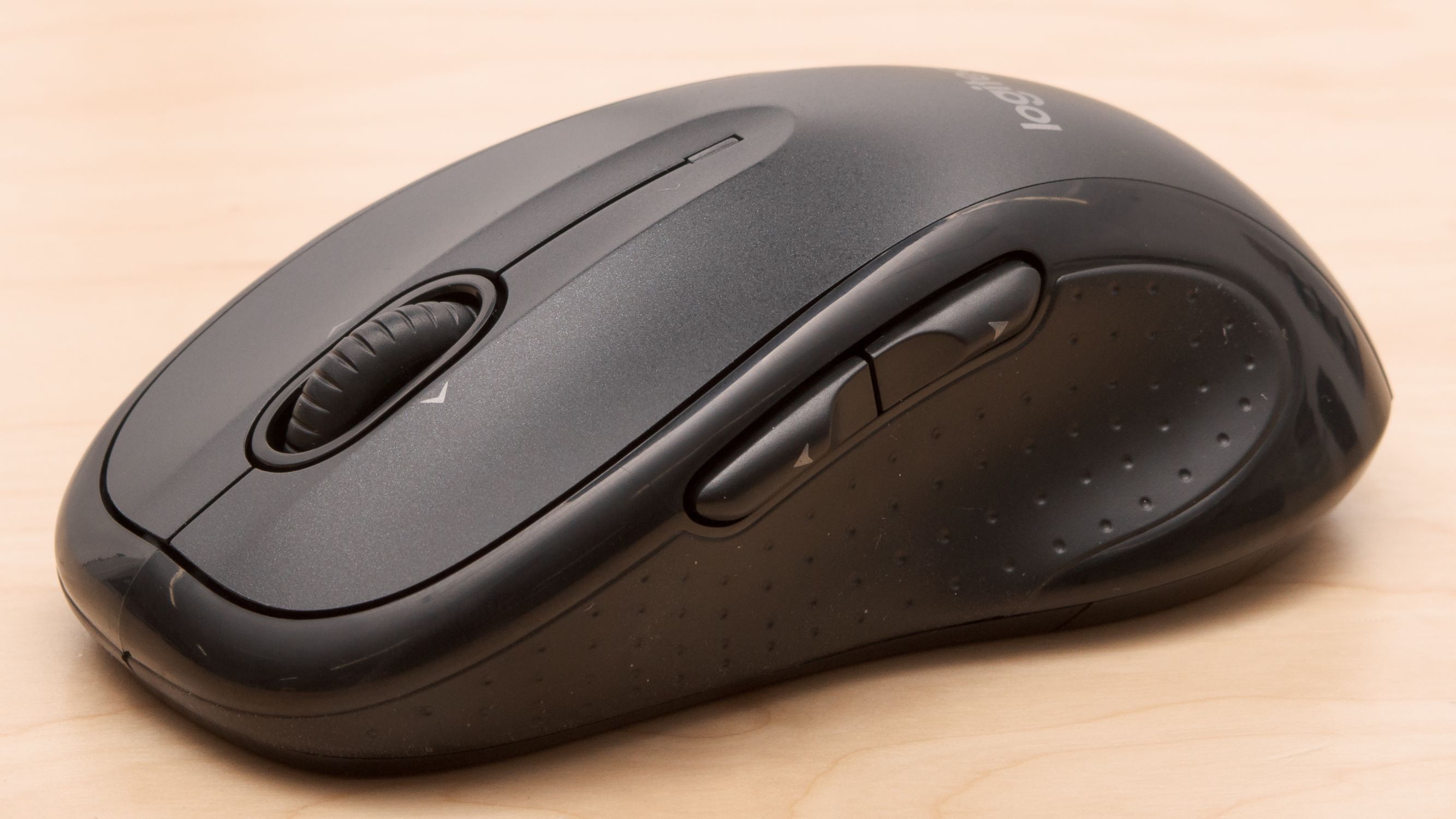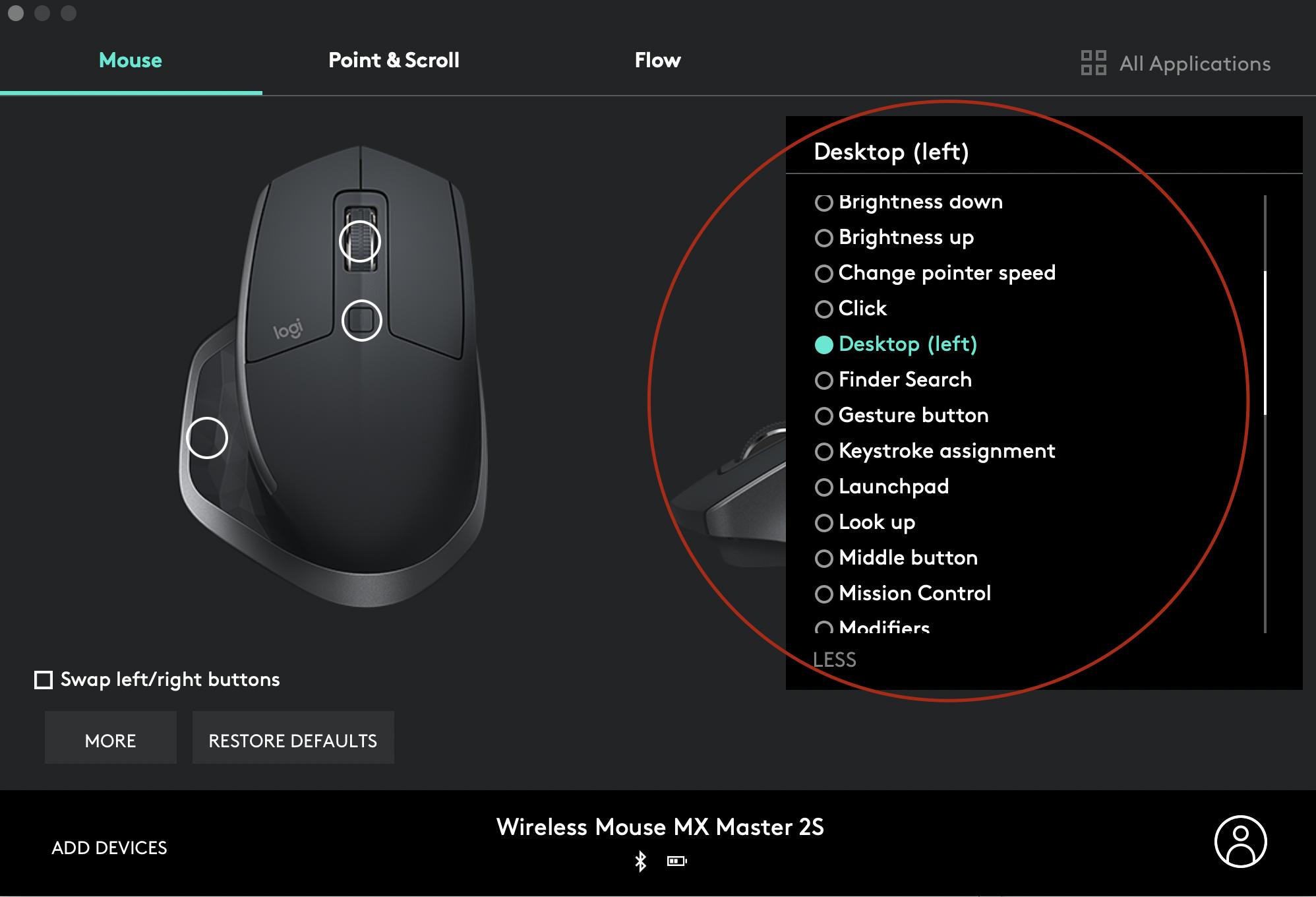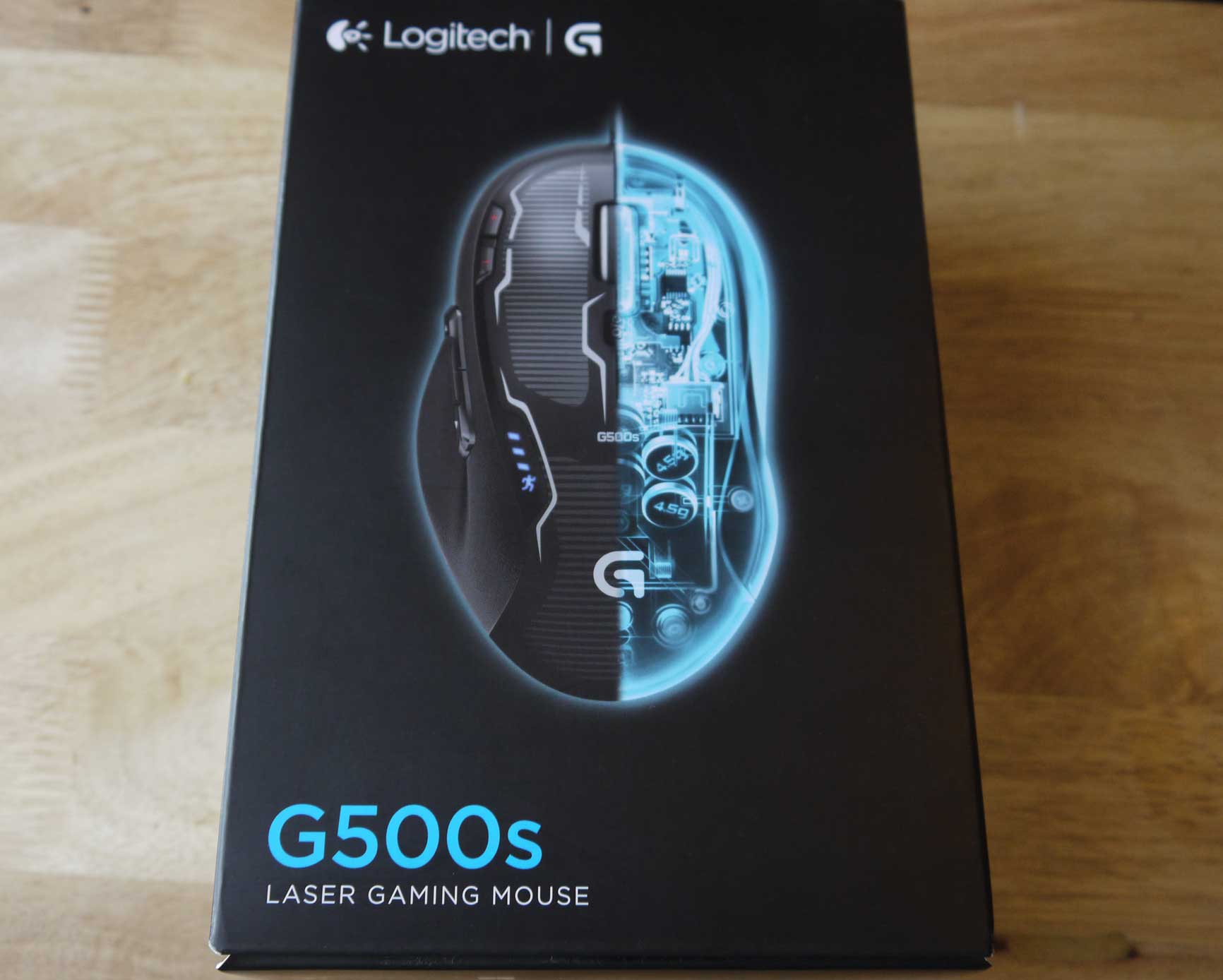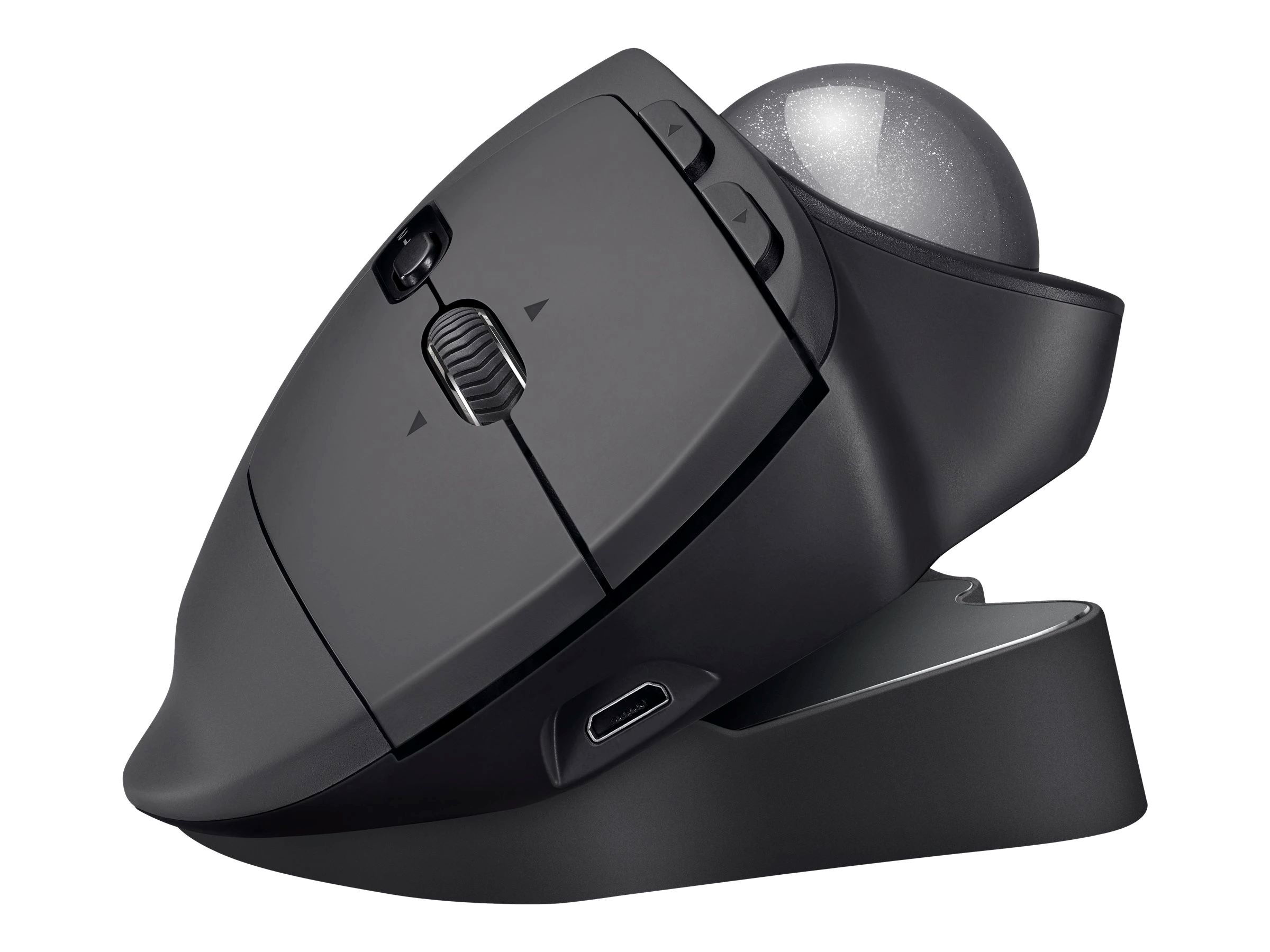Introduction
Welcome to the world of Logitech mice! These sleek and ergonomic devices are designed to enhance your computing experience and provide seamless navigation. However, like any technology, they may encounter issues from time to time. One common problem that users face is the Logitech mouse not connecting to their computer or laptop.
When your Logitech mouse stops connecting, it can be frustrating and hinder your productivity. Fortunately, there are various troubleshooting steps you can take to resolve the issue and get your mouse up and running again. In this article, we will explore the common causes of Logitech mouse connection problems and provide you with practical solutions to fix them.
Before diving into the troubleshooting steps, it’s important to understand that there can be multiple factors contributing to the connection issue. It could be a software glitch, outdated drivers, battery-related problems, interference from other devices, or even a faulty Logitech Unifying receiver. By diagnosing the root cause, you can effectively troubleshoot the problem and find a suitable solution.
Throughout this guide, we will walk you through the troubleshooting process step by step, ensuring that you understand each action you take. Whether you’re using a wireless or wired Logitech mouse, these troubleshooting techniques will help you reconnect your mouse and regain control over your computer.
However, please note that if you’re unsure about performing any of the troubleshooting steps or if the issue persists after attempting them, it’s best to contact Logitech support for further assistance. They have a dedicated team of experts who can provide you with personalized guidance based on your specific mouse model and configuration.
Now, without further ado, let’s explore the common causes of Logitech mouse connection issues and delve into the troubleshooting steps to get your mouse back online!
Common Causes of Logitech Mouse Connection Issues
When your Logitech mouse refuses to connect, there can be several reasons behind the problem. Understanding these common causes will help you pinpoint the issue and apply the appropriate troubleshooting steps. Let’s explore some of the most prevalent culprits:
1. Signal Interference: Wireless Logitech mice utilize radio frequency (RF) signals to communicate with your computer. However, these signals can be disrupted or weakened by other devices operating in close proximity, such as routers, cordless phones, or even wireless keyboards. This interference can lead to a loss of connection or erratic mouse behavior.
2. Outdated Drivers: Drivers act as a bridge between your Logitech mouse and your operating system. If your drivers are outdated or incompatible with your current OS version, you may experience connection problems. It’s essential to keep your Logitech mouse drivers up to date to ensure optimal performance.
3. Low Battery Power: If you’re using a wireless Logitech mouse, it relies on battery power. When the batteries are running low, your mouse may not connect or function properly. It’s essential to check and replace the batteries if necessary to resolve connection issues.
4. USB Port Issues: If you’re using a wired Logitech mouse, the USB port it’s connected to may have problems. A faulty port or loose connection can prevent the mouse from being recognized by your computer, resulting in connection issues.
5. Logitech Unifying Receiver: The Logitech Unifying receiver is a small USB dongle that enables you to connect multiple Logitech devices to a single receiver. However, if the receiver becomes unpaired or there’s a problem with its connection, your Logitech mouse may not connect properly.
6. Software Glitches: Sometimes, software conflicts or glitches can interfere with your Logitech mouse’s connection. It’s crucial to ensure that your operating system and other relevant software are updated to eliminate any potential compatibility issues.
By identifying these common causes, you can start troubleshooting the Logitech mouse connection problem effectively. In the next section, we will walk you through the step-by-step troubleshooting process to fix the issue and reconnect your Logitech mouse.
Troubleshooting Steps to Fix Logitech Mouse Connection
When your Logitech mouse refuses to connect, don’t panic! There are several troubleshooting steps you can follow to resolve the issue. Here’s a step-by-step guide to help you get your Logitech mouse up and running again:
1. Check the Physical Connection: If you’re using a wired Logitech mouse, ensure that the USB cable is securely connected to both the mouse and the USB port on your computer or laptop. If the connection seems loose or unstable, try connecting the mouse to a different USB port.
2. Replace the Batteries: For wireless Logitech mice, low battery power can cause connection problems. Replace the batteries with fresh ones and ensure they are inserted correctly. Remember to check the correct battery orientation as indicated by the markings in the battery compartment.
3. Restart Your Computer: Sometimes, a simple computer restart can fix connection issues. Restart your computer and check if your Logitech mouse is recognized and functioning properly after the reboot.
4. Disconnect and Reconnect: If you’re using a wired Logitech mouse or a wireless one with a USB receiver, try disconnecting and reconnecting it. Unplug the USB cable or USB receiver from your computer, wait for a few seconds, and then plug it back in. This action can help re-establish the connection.
5. Reset Logitech Unifying Receiver: If you’re using a Logitech wireless mouse with a Unifying receiver, you may need to reset the receiver to re-establish the connection. Locate the Unifying receiver and press the reset button on it. Then, follow the pairing instructions to reconnect your Logitech mouse.
6. Update Logitech Mouse Drivers: Outdated or incompatible drivers can cause connection problems. Visit the Logitech website, enter your mouse model number, and download the latest drivers for your specific mouse model and operating system. Install the updated drivers and check if the mouse connection is restored.
7. Disable Power Saving Mode: Some operating systems have power-saving features that can affect USB devices, including Logitech mice. To ensure uninterrupted connection, disable power-saving mode for USB devices in your computer’s settings.
8. Test on Another Computer: If possible, try connecting your Logitech mouse to another computer. This step will help determine if the issue is with your mouse or your computer. If the mouse works on another computer, the problem is likely with your computer configuration.
9. Contact Logitech Support: If none of the troubleshooting steps listed above resolve the issue, it’s time to reach out to Logitech support. They have a dedicated team of experts who can provide further assistance and guidance tailored to your specific Logitech mouse model and situation.
By following these troubleshooting steps, you should be able to identify and resolve the connection issue with your Logitech mouse. Take your time, be patient, and ensure that you follow each step carefully. In most cases, one of these steps will successfully resolve the problem and have your Logitech mouse functioning perfectly once again.
Updating Logitech Mouse Drivers
Outdated or incompatible drivers can often be the cause of connection issues with your Logitech mouse. Keeping your drivers up to date is essential to ensure optimal performance and compatibility. Here’s a guide on how to update your Logitech mouse drivers:
1. Identify Your Mouse Model: Before you can update your mouse drivers, you need to determine the exact model of your Logitech mouse. Check the bottom of your mouse for a product label or look in the mouse settings on your computer to find the model information.
2. Visit the Logitech Support Website: Go to the official Logitech support website (www.logitech.com/support) and navigate to the “Mice” section. Enter your mouse model in the search bar or select it from the list of available options.
3. Download the Latest Drivers: On the support page for your specific mouse model, you will find a list of available drivers and software updates. Look for the most recent driver that is compatible with your operating system.
4. Install the Updated Drivers: Once you have downloaded the latest drivers, locate the installation file on your computer and double-click to run it. Follow the on-screen instructions to install the drivers. Make sure to carefully read any prompts or warnings during the installation process.
5. Restart Your Computer: After the driver installation is complete, it’s recommended to restart your computer. This ensures that the new driver changes take effect and allows your system to recognize the updated Logitech mouse drivers.
6. Test the Mouse Connection: Once your computer has rebooted, test the connection of your Logitech mouse. Check if it is now recognized and functioning correctly. Verify that all the mouse buttons, scroll wheel, and any additional features are working as expected.
7. Repeat the Process if Necessary: If the issue persists after updating the drivers, you may need to repeat the process using a different driver version or try alternative troubleshooting steps. Logitech’s support website also provides additional resources, such as FAQs and user forums, where you can find further assistance if needed.
By keeping your Logitech mouse drivers updated, you ensure that your mouse can communicate effectively with your computer and avoid potential compatibility issues. Regularly checking for driver updates is recommended to maintain the smooth functioning and optimal performance of your Logitech mouse.
Resetting the Logitech Mouse Connection
If you’re experiencing connection issues with your Logitech mouse, resetting the mouse connection can often help resolve the problem. Resetting the connection involves clearing any existing pairing information and establishing a fresh connection between the mouse and the receiver. Here’s how you can reset the Logitech mouse connection:
1. Turn off the Mouse: Start by turning off your Logitech mouse. If it’s a wireless mouse, remove the batteries to power it down completely.
2. Disconnect the Receiver: If you’re using a Logitech wireless mouse with a USB receiver, unplug the receiver from your computer’s USB port. Make sure to remove any other Logitech devices paired with the same receiver as well.
3. Press and Hold the Connect Buttons: On both the mouse and the receiver, locate the connect buttons. The location of these buttons may vary depending on your Logitech mouse model. Press and hold the connect button on the receiver first, and then press and hold the connect button on the mouse. Hold the buttons for around five seconds.
4. Release the Connect Buttons: After holding the connect buttons, release them. This action clears the existing pairing information in both the mouse and the receiver.
5. Reconnect the Receiver: Plug the Logitech wireless receiver back into a USB port on your computer. Ensure that the receiver is connected securely and that there are no obstructions that may interfere with the wireless signal.
6. Turn on the Mouse: If you removed the batteries earlier, insert them back into the mouse and turn it on. Wait for a few seconds to allow the mouse and receiver to establish a fresh connection.
7. Test the Mouse Connection: Move the mouse around and check if it is now recognized and functioning properly. Verify that the cursor moves smoothly and that all the buttons and features of the Logitech mouse are working as intended.
8. Repeat the Process if Necessary: If the connection issue persists, you may need to repeat the process a few times or try alternative troubleshooting steps. Refer to Logitech’s support website or contact their customer support for further assistance tailored to your Logitech mouse model.
Resetting the Logitech mouse connection can help resolve various connection-related issues. By establishing a fresh connection between the mouse and the receiver, you increase the chances of a successful connection and restore the functionality of your Logitech mouse.
Checking Battery and Power Related Issues
For wireless Logitech mice, battery power plays a crucial role in maintaining a stable connection. If your mouse is not connecting or experiencing erratic behavior, it’s important to check the battery and power-related issues. Here are some steps you can take to troubleshoot and resolve these problems:
1. Replace the Batteries: If you haven’t replaced the batteries recently, it’s possible that they are running low on power. Replace the batteries with fresh ones and ensure that they are inserted correctly, following the polarity markings in the battery compartment. Low battery power can cause connection problems and lead to an unreliable mouse experience.
2. Check Battery Contacts: Clean the battery contacts on both the mouse and the batteries themselves. Over time, dust and debris can accumulate on the contacts, hindering the flow of power. Use a clean, dry cloth or a cotton swab dipped in isopropyl alcohol to gently clean the contacts and remove any residue.
3. Use High-Quality Batteries: To ensure optimal performance, use high-quality alkaline or lithium batteries from reputable brands. Avoid using rechargeable batteries as they may have lower voltage levels, which can impact the connectivity and responsiveness of your Logitech mouse.
4. Verify Power-Saving Settings: Some Logitech mice have power-saving features that can extend the battery life but may affect connection stability. Check the mouse settings, either through Logitech software or your computer’s control panel, to ensure that the power-saving settings do not interfere with the connection. Disable or adjust these settings if necessary.
5. Check USB Receiver Power: If your Logitech mouse uses a USB receiver, ensure that it is receiving power and properly inserted into a functioning USB port. Try using a different USB port to rule out any potential issues with the port itself. Additionally, avoid using USB hubs or extensions, as they may introduce power and connection problems.
6. Reset the Mouse Connection: If you have performed the steps above and are still experiencing connection issues, resetting the mouse connection (as discussed in the previous section) can help eliminate any temporary glitches that may be affecting battery and power-related performance.
7. Monitor Battery Life: Keep an eye on your Logitech mouse’s battery life and replace the batteries as needed. It’s a good idea to have spare batteries on hand so that you can quickly swap them out when necessary.
8. Consider a Wired Connection: If you continue to experience significant battery and power-related issues with your Logitech mouse, you may want to consider using it in wired mode. Some Logitech mice offer the flexibility to switch to a wired connection, which eliminates the need for batteries and provides a stable connection.
By checking the battery and power-related issues, you can ensure that your Logitech mouse is functioning at its best. Regularly monitoring battery life and taking appropriate measures can help prevent connection problems and provide a reliable and hassle-free experience with your Logitech mouse.
Troubleshooting Connection Issues with Logitech Unifying Receiver
If you are using a Logitech wireless mouse with a Unifying receiver, connection issues can arise due to a variety of reasons. The Logitech Unifying receiver is a small USB dongle designed to connect multiple Logitech devices to a single receiver. To troubleshoot and resolve connection problems with the Unifying receiver, consider the following steps:
1. Verify Receiver Placement: Ensure that the Unifying receiver is inserted into a USB port on your computer properly. Make sure it is firmly connected and not obstructed by any objects that might hinder the wireless signal. Avoid using USB hubs or connecting the receiver through extension cables, as they can interfere with the connection.
2. Try Different USB Ports: If you encounter connection issues, try plugging the Unifying receiver into a different USB port on your computer. Some ports may have better signal reception than others, and using a different port can help resolve connectivity problems.
3. Remove Interference: Wireless devices, such as routers, cordless phones, or even other wireless peripherals, can interfere with the signal transmission of the Unifying receiver. Keep these devices away from your Logitech mouse and the receiver to minimize potential interference.
4. Pair the Mouse to the Receiver: In some cases, the mouse may become unpaired from the Unifying receiver, resulting in a connection problem. To re-establish the connection, follow the instructions provided by Logitech for pairing your specific Logitech mouse model to the Unifying receiver.
5. Use Logitech Unifying Software: Logitech provides Unifying software that allows you to manage and troubleshoot the connection of multiple Logitech devices connected to the same Unifying receiver. Download and install the software from the Logitech support website to ensure you have the latest version and use it to troubleshoot the connection issue.
6. Update Receiver Firmware: Logitech occasionally releases firmware updates for the Unifying receivers to improve performance and address compatibility issues. Check the Logitech support website for available firmware updates for your Unifying receiver and apply them following the provided instructions.
7. Reset the Receiver: If all else fails, you can try resetting the Unifying receiver. Locate the “Reset” button on the receiver and press it using a paperclip or a similar tool. Then, follow the instructions to re-pair your mouse and any other Logitech devices with the receiver.
8. Contact Logitech Support: If you’ve exhausted all troubleshooting steps and the connection issue persists, it may be time to reach out to Logitech support. Their expert team can provide personalized assistance and guide you through further troubleshooting or explore other possible solutions.
By following these troubleshooting steps and taking appropriate measures, you can effectively address and resolve connection issues with your Logitech Unifying receiver. Providing a stable and reliable connection to your Logitech wireless mouse is crucial for optimal performance and a seamless computing experience.
Checking for Interference from Other Devices
Interference from other devices can often disrupt the connection between your Logitech mouse and your computer. Identifying and addressing potential sources of interference is essential to ensure a stable and reliable connection. Here are some steps you can take to check for and mitigate interference from other devices:
1. Identify Wireless Devices: Take note of any other wireless devices operating in close proximity to your Logitech mouse and receiver. These devices can include Wi-Fi routers, cordless phones, wireless speakers, and even neighboring wireless peripherals. Understanding the potential sources of interference is the first step towards resolving the issue.
2. Distance from Wireless Devices: Ensure that your Logitech mouse and receiver are positioned away from other wireless devices, especially those operating on the same frequency band as your mouse. The closer they are to each other, the more likely they are to interfere with each other’s signals. Maintain a reasonable distance between your mouse, receiver, and other wireless devices.
3. Change Wi-Fi Channels: If your Wi-Fi router is causing interference with your Logitech mouse, try changing the channel on which it operates. Most routers offer multiple channel options, and by selecting a less congested channel, you can minimize signal interference and improve your mouse’s connection stability.
4. Switch to 5GHz Wi-Fi: If your Wi-Fi router supports both 2.4GHz and 5GHz frequency bands, consider connecting your devices, including your Logitech mouse, to the 5GHz band. The 5GHz band generally experiences less interference from other devices, reducing the chances of signal interference with your mouse’s connection.
5. Keep Distance from USB 3.0 Devices: USB 3.0 devices, such as external hard drives and flash drives, can sometimes interfere with wireless signals due to electromagnetic interference. Keep your Logitech mouse and receiver away from USB 3.0 devices or use a USB extension cable to create some distance between them.
6. Test in a Different Environment: If possible, try using your Logitech mouse in a different environment, such as a different room or location. This will help determine if the interference is specific to your current environment or if it persists across different locations.
7. Consider Wired Connection: If you have exhausted all potential solutions and interference remains a persistent issue, you may want to consider using your Logitech mouse in wired mode. Connecting your mouse via a USB cable can eliminate the possibility of wireless interference altogether.
8. Seek Expert Support: If interference continues to impact the connection of your Logitech mouse, it may be beneficial to consult Logitech support or seek assistance from a technical expert who can offer more specialized guidance and solutions.
By checking for and mitigating potential interference from other devices, you can improve the connection stability of your Logitech mouse. Ensure that your mouse and receiver are placed away from wireless devices, consider changing Wi-Fi channels, and explore other possible solutions to create an interference-free computing environment.
Contacting Logitech Support for Further Assistance
If you have exhausted all troubleshooting steps and are still experiencing issues with your Logitech mouse connection, it’s time to reach out to Logitech support for further assistance. Logitech offers dedicated customer support to help you resolve any problems you may be facing. Here’s how you can contact Logitech support:
1. Check the Logitech Website: Start by visiting the Logitech support website (www.logitech.com/support). They have a comprehensive knowledge base where you can find troubleshooting guides, FAQs, and product-specific information. Browse through the relevant sections to see if there are existing solutions to your connection issue.
2. Contact Logitech via Web Support: If you are unable to find the solution you need on the support website, you can submit a support ticket or inquiry through the Logitech web support form. Fill out the required information, provide a detailed description of your problem, and submit the form. Logitech support will review your inquiry and provide a response via email or phone, depending on your preference.
3. Live Chat Support: Logitech also offers live chat support, where you can communicate with a support representative in real-time to address your connection issue. Look for the live chat option on the Logitech support website and initiate a chat session to get immediate assistance.
4. Phone Support: If you prefer direct contact, Logitech provides phone support in select regions. Check the Logitech support website for specific phone numbers based on your location. Prepare your product’s serial number and relevant information before calling for more efficient troubleshooting.
5. Social Media and Community Forums: Logitech has an active presence on social media platforms and hosts user communities where you can reach out to other Logitech users for assistance. You can find official Logitech accounts on platforms like Facebook, Twitter, and Reddit, as well as dedicated Logitech community forums.
6. Provide Detailed Information: When contacting Logitech support, ensure that you provide detailed information about your Logitech mouse model, operating system, specific connection issue, and the steps you have already taken to resolve it. This will help support representatives understand your problem better and provide more effective solutions.
Remember, Logitech support is there to assist you with any issues you may encounter with your Logitech mouse. Their knowledgeable and friendly support staff can offer personalized guidance, troubleshooting tips, and potential solutions tailored to your specific situation.
If your Logitech mouse is still under warranty, be sure to mention it when contacting support, as you may be eligible for additional assistance or product replacement if necessary.
Don’t hesitate to reach out to Logitech support if you need further assistance. Their team is dedicated to helping customers and ensuring a positive user experience with Logitech products.
Conclusion
Dealing with connection issues with your Logitech mouse can be frustrating, but with the right troubleshooting steps, you can regain control and restore functionality. Through this guide, we explored common causes of Logitech mouse connection problems and provided solutions to help you troubleshoot and resolve these issues.
We started by discussing the common causes of Logitech mouse connection problems, such as signal interference, outdated drivers, low battery power, USB port issues, Logitech Unifying receiver problems, and software glitches. Understanding these causes is crucial in diagnosing the root of the connection issue.
We then walked you through a step-by-step troubleshooting process, including checking the physical connection, replacing batteries, restarting your computer, disconnecting and reconnecting the mouse, resetting the Logitech Unifying receiver, updating mouse drivers, and more. Following these steps allows you to address the most common connection problems and restore the connection between your Logitech mouse and your computer.
If troubleshooting steps don’t resolve the issue, we recommended reaching out to Logitech support for further assistance. Logitech provides various support channels, including web support, live chat, phone support, and community forums, to help you get personalized guidance and solutions for your specific Logitech mouse model.
Remember to provide detailed information about your mouse model, operating system, and the troubleshooting steps you have already taken when contacting support. This will help them better understand your issue and provide relevant assistance.
In conclusion, by following the troubleshooting steps outlined in this guide and seeking assistance from Logitech support when needed, you can overcome connection issues with your Logitech mouse. Ensuring a stable and reliable connection enhances your productivity and allows you to fully enjoy the seamless navigation and control that Logitech mice provide.







